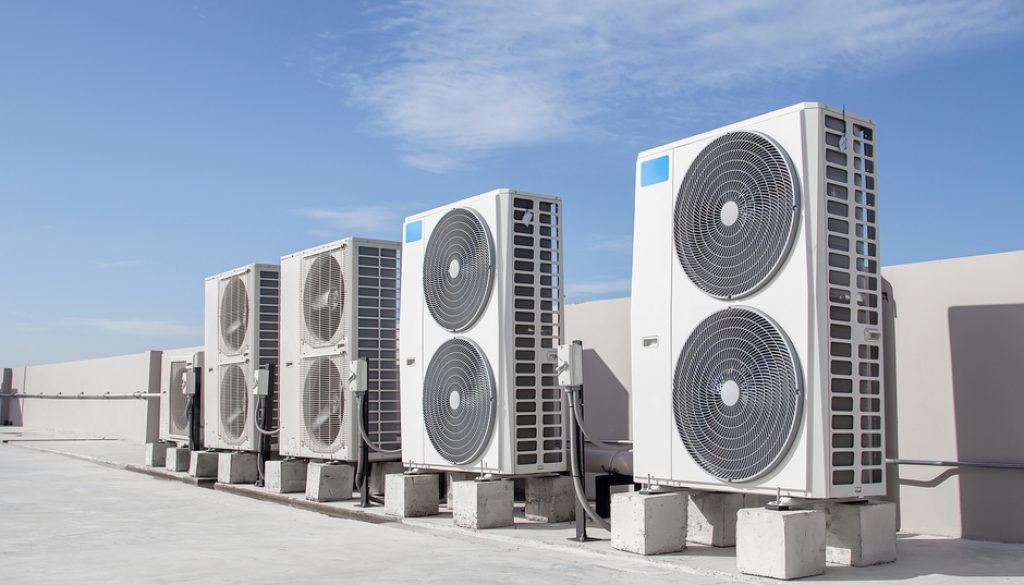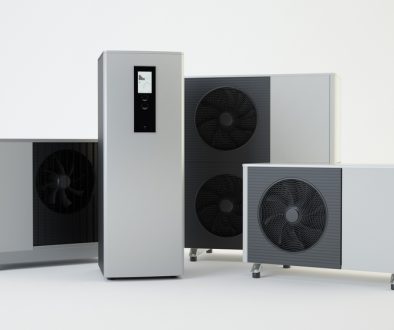Seasonal Energy Performance Ratio: a key parameter for energy efficiency in industrial cooling systems
In today’s industrial panorama, the choice of which cooling equipment to purchase can no longer be based solely on traditional criteria such as refrigeration capacity or initial investment costs. The increased focus on energy efficiency, regulatory compliance and sustainability has led to new evaluation standards, which include the Seasonal Energy Performance Ratio (SEPR).
This indicator, specifically developed to regulate what are known as process cooling systems, is quite different to other performance measurement systems, because it is able to accurately reflect the real world conditions that industrial machinery is subjected to. These machines are often expected to function continuously 24 hours a day, 7 days a week, all year round.
The SEPR is not just a numerical figure, it also provides system producers and managers with a genuine strategic tool. While on one hand, it facilitates certification of compliance with increasingly strict regulations on eco-design and energy efficiency, on the other, it enables companies to cut operational costs, mitigate the risk of system breakdowns and improve their sustainability credentials.
Differences between SEPR and SEER
In order to understand the significance of the SEPR, it is interesting to compare it with the more widely known SEER (Seasonal Energy Efficiency Ratio): an index mainly used for domestic air conditioning systems which are normally only used during warm periods, rather than throughout the year. The calculation method used in that system takes standard environmental conditions as its starting point, which do not however reflect the complex conditions found in industrial settings.
In contrast, the SEPR was developed with the aim of describing the actual energy performance of industrial cooling units. Industrial systems do not operate in conditions of occasional partial loads; in reality, they must withstand intense rhythms, typically working at between 80% and 100% of their capacity for 8,640 hours a year. This implies totally different requirements compared to ‘comfort cooling’, making the SEPR a more appropriate tool for accurately assessing energy performance during industrial processes.
Seasonal Energy Performance Ratio classifications
The SEPR is not a single, vague parameter. It is sub-divided into categories which reflect the various temperature levels required for process applications. The three main classifications are:
SEPR HT (High Temperature): regards systems that operate at temperatures between 7°C and 12°C. This range is common to many industrial processes and is subject to specific compliance obligations;
SEPR MT (Medium Temperature): applies to machines operating at temperatures between -8°C and 7°C. This range is used for example in the food industry and in medium temperature chemical processes;
SEPR LT (Low Temperature): dedicated to systems that must operate at temperatures below -25°C, such as the frozen food industry and cryogenic storage.
This subdivision into classes allows producers to design machines specifically for certain uses and managers to choose systems which are genuinely suited to their needs, with perfomance certified for a specific category of use.
Assessment method
One of the most important aspects of the Seasonal Performance Ratio is the method by which it is calculated. The parameter considers the relationship betweeen the refrigeration capacity offered and the quantity of electricity used, over an entire calendar year. Unlike SEER, which uses more favourable, limited conditions of reference, the SEPR’s approach is based on the concept of ‘bin hours’.
The calculation starts from very low room temperatures (up to -19°C, compared with 17°C used as a reference for comfort cooling systems). This allows for the simulation of realistic scenarios (including extreme ones) and the calculation of an index which closely reflects seasonal efficiency. In other words, the SEPR is a parameter which takes into account not only peak values, but also operational variability and load fluctuations.
Importance of independent certification
In order for the SEPR to be of real value to those using it, it is essential that it is verified by independent organisations through standardised tests. Associations such as Eurovent carry out a crucial role in this area, ensuring that data declared by manufacturers corresponds to actual figures.
For those who manage the equipment, the opportunity to have certified documentation represents an important element of trust and transparency. Purchasing machines with a third party validated SEPR enables the risks associated with below par performance to be reduced, thereby avoiding unpleasant financial and operational consequences.
Regulatory compliance and responsabilities
The Seasonal Energy Performance Ratio is not only a voluntary evaluation tool, it is also closely linked to the European legislative framework. The European Union and UK’s Eco-Design Directive establishes compulsory energy efficiency requirements for process cooling systems. These responsibilities are shared:
- by manufacturers, who must guarantee that their products respect the necessary standards and provide transparent data and documentation to demonstrate that;
- by purchasers and system managers, who in turn have the duty to verify compliance, by incorporating the SEPR evaluation into due diligence strategy processes and external audits.
If it does not adopt certified systems, a company can be exposed to penalties, loss of competitivity and the risk of non-compliance with environmental regulations.
In a scenario in which companies are making more serious public commitments to achieving climate neutrality and being more environmentally responsible, the SEPR can enhance their reputation. Conversely, opting for uncertified systems can give rise to doubts about the coherence between their declared environmental policies and actual operational practices.
Manufacturing companies therefore have the task of ensuring that purchasing decisions reflect their own stated sustainability objectives. A lack of attention to compliance can result in the loss of contracts, reputation damage and a decline in trust among clients and stakeholders.
It goes witout saying that the Seasonal Energy Performance Ratio is not only a measurement of efficiency, it is also a strategic lever to help face the challenges of modern industry, where energy, reliability and sustainability are inextricably linked factors.
Translated by Joanne Beckwith







